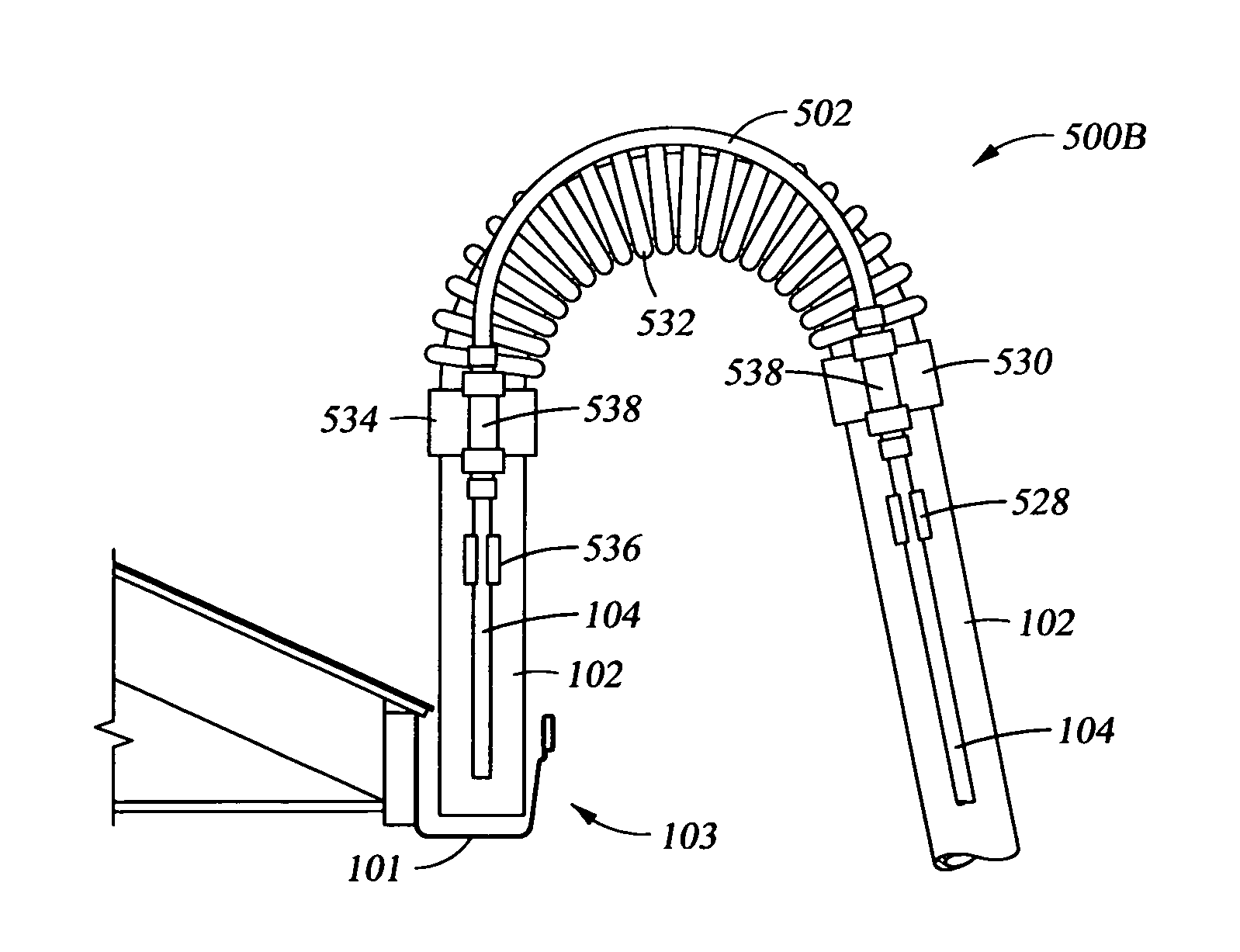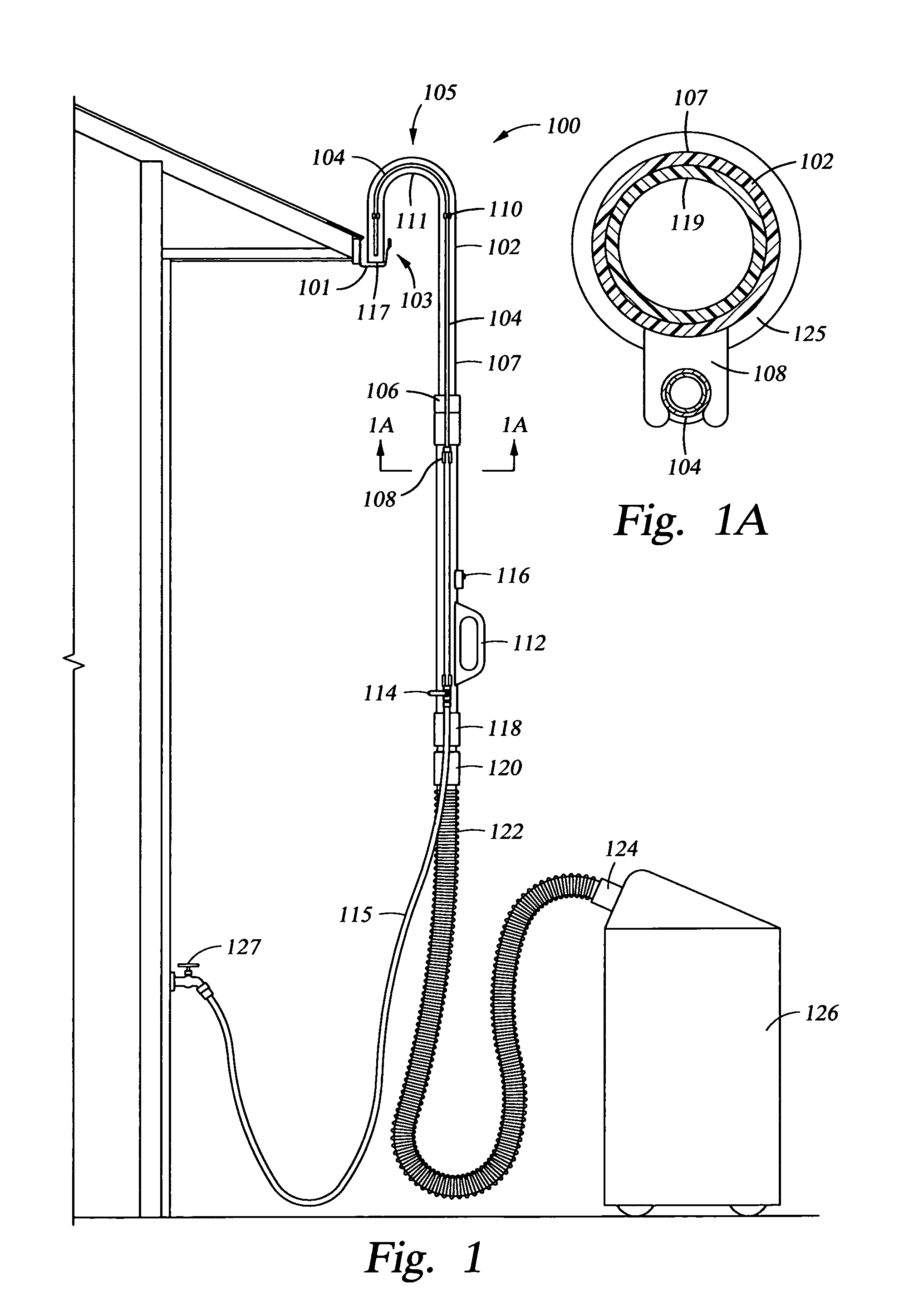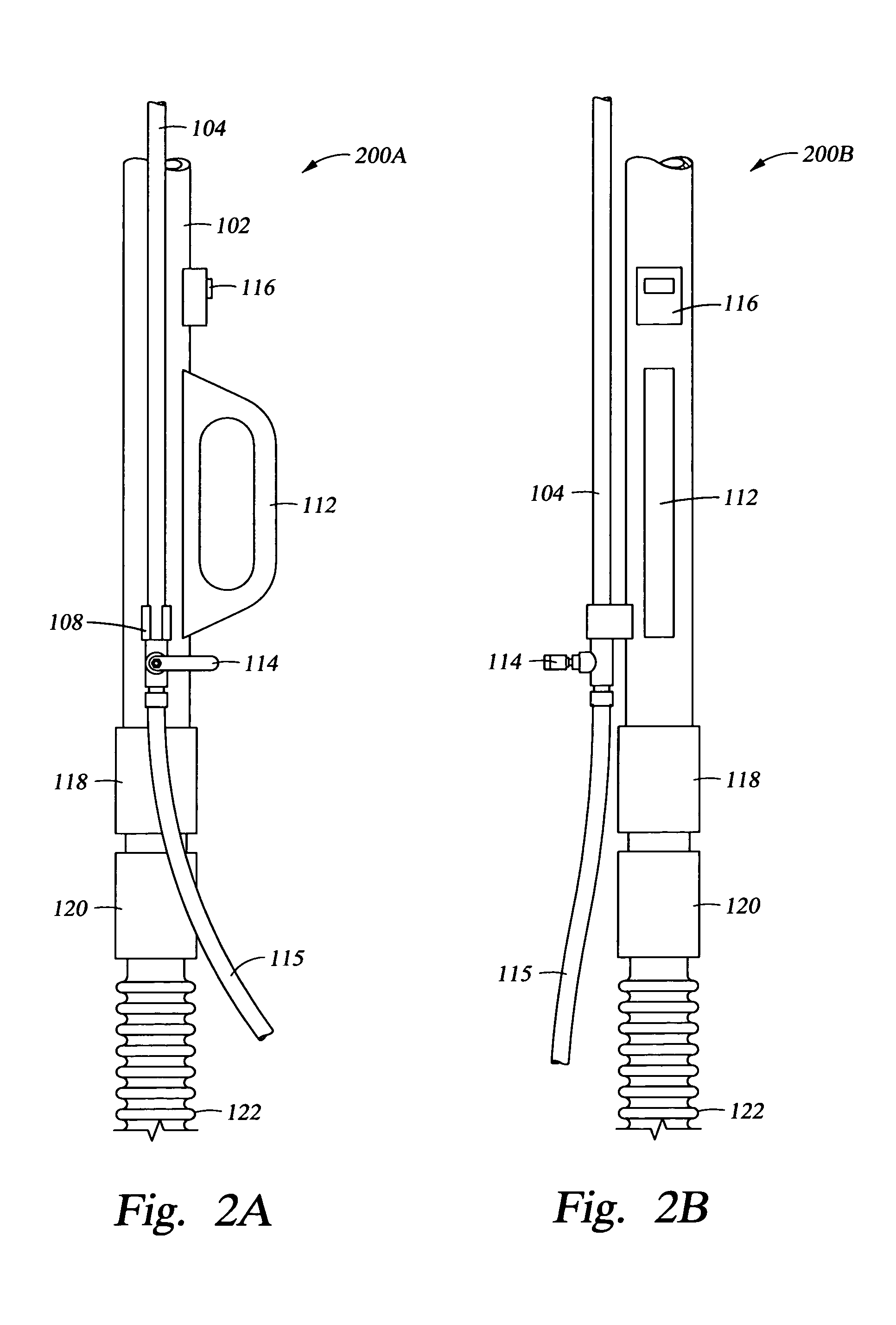Apparatus for removing debris from gutters, troughs and other overhead open conduits
a technology for removing debris and debris from gutters, troughs and other overhead open conduits, which is applied in the direction of chemistry apparatus and processes, cleaning using liquids, cleaning equipment, etc., can solve the problems of reducing the strength of the vacuum available, heavy devices and difficult to carry, and previous devices are problematic, etc., to achieve tight seals, easy to determine, and improve cleaning
- Summary
- Abstract
- Description
- Claims
- Application Information
AI Technical Summary
Benefits of technology
Problems solved by technology
Method used
Image
Examples
Embodiment Construction
[0035]The apparatus can be used to remove debris from gutters, troughs, and other overhead open conduits used for water flow. With reference to FIG. 1, the apparatus 100 includes a shaped conduit 102 where the sidewalls are closed and each end of the conduit is open. The main body 107 of the conduit is straight, with an opening at the bottom (not shown), and an opening 117 from the upper portion 105 of the shaped conduit 102, which reaches from the main body 107 into the gutter, trough or other overhead open conduit 103, exhibits a bend 111 which allows the shaped conduit 102 to reach over the edge of overhead open conduit 103, so that the end 117 of the upper portion 105 of the conduit is adjacent the bottom 101 of the overhead open conduit 103, where the debris (not shown) to be removed is present. A second water line 115, typically extends from water line 104 to a water source such as water spigot 127. The flow of water through the shaped conduit 102, and flexible line 122 to col...
PUM
 Login to View More
Login to View More Abstract
Description
Claims
Application Information
 Login to View More
Login to View More - R&D
- Intellectual Property
- Life Sciences
- Materials
- Tech Scout
- Unparalleled Data Quality
- Higher Quality Content
- 60% Fewer Hallucinations
Browse by: Latest US Patents, China's latest patents, Technical Efficacy Thesaurus, Application Domain, Technology Topic, Popular Technical Reports.
© 2025 PatSnap. All rights reserved.Legal|Privacy policy|Modern Slavery Act Transparency Statement|Sitemap|About US| Contact US: help@patsnap.com



